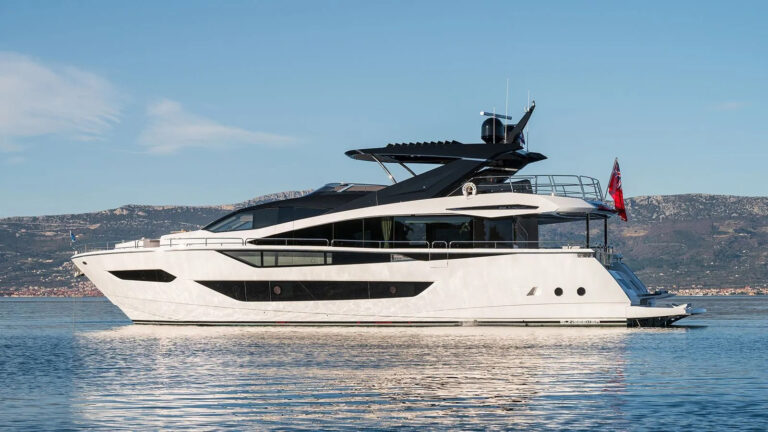
Ted Hood, circa 1990
Frederick Emmart “Ted” Hood, 86, died on June 28, 2013, leaving behind an enviable legacy of technical innovation, design savvy and sailing skills — and for everyone whose lives he touched, a profound sadness.
Born in Beverley, Massachusetts, Hood grew up in Danvers and Marblehead, and like most top-notch sailors, began sailing at a very early age — honing and embedding the instincts that would carry him to victory in the Marblehead-Halifax Race (1961 and 1971), the Newport-Bermuda Race (1968) and the SORC (1974) aboard a succession of keel-centerboarders christened Robin. Also in 1974, Hood won the America’s Cup as skipper of Courageous, beating Australia’s Southern Cross 4-0.
Hood’s natural affinity for sailing allowed him to see shapes (maybe envision is the better word) differently from his contemporaries. His first boat was an 11-foot dinghy that he designed and built, but more important, he also made the sails for her double-spreader rig. Using his eye for shapes and his feel for performance, he modified those sails again and again until they were perfect. Therein lay a significant chunk of the man’s future.
After a stint in the navy during World War II, Hood returned to Marblehead to finish high school and decide in which direction to aim his life. He chose the practical route — a year of study in business administration followed by two years at Wentworth Institute of Technology in Boston learning the business of building and selling houses. During the summers, he recut sails for local yachtsmen and stitched them on a clapped-out sewing machine, soon earning a reputation for genius in sailmaking and design. After Hood graduated from Wentworth, he founded Hood Sailmakers in 1955. The business grew rapidly, thanks, in part, to Hood’s penchant for innovation.
Dacron sailcloth wasn’t new, but the commercially available material stretched more than Hood liked, and new sails soon lost their shape. The material stretched because it was too loosely woven, so Hood, with the help of his father, engineer Ralph Stedman Hood, developed a tighter weave and produced sailcloth in-house. This cloth was stronger than conventional Dacron and far more durable. The dense weave, laced with brown thread, earned Hood the moniker “Brown-Thread Ted.” He also founded Hood Yacht Systems, and through that company launched the Gemini grooved headstay for racing, the Seafurl headsail furler, the Stoway in-mast roller reefing system — all of which he invented.
Early in the 1980s, Hood sold the yacht systems and sailmaking businesses and focused his attention on designing and building yachts under the Little Harbor name. In 1986, he moved his business to Little Harbor Landing in Portsmouth, Rhode Island, on the site of a World War II Navy fuel depot. Approximately 1,500 yachts of Hood’s design still sail the seas.
Hood’s sheer size, his laconic style and his reputation intimidated me when we met for the first time many years ago. I needn’t have worried, though, because as soon as I asked a question about design, the verbal floodwaters spilled forth. I remember Ted Hood as a gracious, kind and enthusiastic gentleman, and his passing saddens me.









